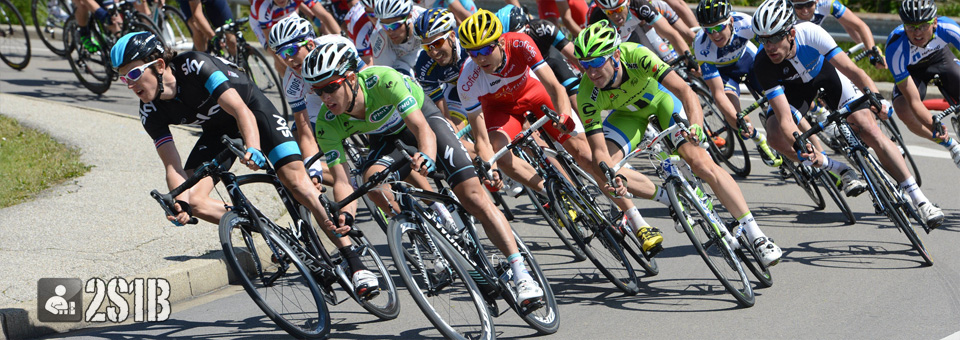Hello there faithful readers or reader, whichever one. Most likely reader, but who cares when you have a platform like this to get your bike on! Amirite?! *slaps self on back* I apologize for not posting much over the last two months, but I, like most normal human beings am busy. What are you busy with you may ask? Well now let me see…. I chased people and ate their brains (figuratively, not literally), drank good beer, ate food that was terrible for my health, camped, ran, biked and waited for summer to get here. Good lord is it cold and rainy out. I feel like I am at Fleche Wallone or another spring classic in the Low Countries….. in March! This isn’t June! It’s a madhouse! Let’s get back to what brought you here and that is, This Week in Bike Racing!
First up is the Criterium du Dauphine and that is French for…… critters for dolphins? Ok, I think my Google translate is broken. Here is the rundown for the important warm-up (ha see what I did there) to the granddaddy of them all, the TdF. The Critérium du Dauphiné known as the Critérium du Dauphiné Libéré before 2010 is an annual road race, run over eight stages in the Dauphiné region in France during the first half of June. The race was inaugurated in 1947 by a local newspaper, the Dauphiné Libéré, which gave its name to the event. For many years, organization of the event was shared between the newspaper publishers and the Amaury Sport Organisation (ASO); in 2010, the newspaper ceded all organizational responsibility to the ASO, and the race’s name was abbreviated. The Dauphiné is an important race in the lead-up to the Tour de France in July, and it is part of the UCI World Ranking calendar. Because the Dauphiné is a mountainous area, the winners are often climbing specialists. Many climbs that are famous from the Tour de France – like the Mont Ventoux, the Col du Galibieror Col de la Chartreuse – appear often in the Dauphiné Libéré. All cyclists who have won the Tour de France five or more times have also won the Dauphiné Libéré. The first Dauphiné Libéré was held in 1947 when Edouard Klabinski from Poland was the winner. Nello Lauredi, Luis Ocaña, Charly Mottet and Bernard Hinault share the record of the most wins, with three each. It has also served as a test of both advanced equipment for the cyclists and for broadcast coverage, which is stressed in the mountainous region. The current form of the Critérium is the consequence of a merger with the Circuit of the Six-Provinces-Dauphiné in 1969. The Critérium is the only other race that has been won by all the quintuple winners of the Tour de France (Anquetil, Merckx, Hinault, and Indurain). Eight racers have also won the Dauphiné Libéré and the Tour de France in the same year: Louison Bobet in 1955, Jacques Anquetil in 1963, Eddy Merckx in 1971, Luis Ocaña in 1973, Bernard Thévenet in 1975, Bernard Hinault in 1979 and 1981, Miguel Indurain in 1995, and Bradley Wiggins in 2012. The cities that have hosted a start or finish most often are: Grenoble (44 times), Avignon (32 times), Saint-Étienne (23 times), Annecy (22 times), Chambéry (21 times), Gap (21 times), Lyon(19 times), Aix-les-Bains (18 times), Valence (16 times), Briançon (15 times) and Vals-les-Bains (15 times). The leader of the general classification wears a yellow jersey with a blue band, distinct from the other racers. As early as 1948 a red jersey with white polka-dots was awarded to the climber because of the mountainous journey of the Critérium. In 1955, a green jersey was added for the best sprinter. Gregg LeMond won the race in 1983 (yes!), Levi Leipheimer won in 2006 (ok), Tyler Hamilton was the top finisher in 2000 (oh boy) and Lance Armstrong “won” the race in 2002 and again in 2003 (yikes!).
Next up is the Tour de Suisse. This race holds a special place for Dane Fjelstad because as everyone knows he has Swiss heritage. Wait, what’s that? Fjelstad is Norwegian? What the hell dude! Why did you tell me you are Swiss? Whatever, let’s move on to something I do know something about *sad trombone noise* bike racing! The Tour de Suisse or Tour of Switzerland if you wish for you philistines, is a one week UCI World Tour stage race held annually in June. The race was first held in 1933 and has evolved in timing, duration and sponsorship. It is a proving ground for the Tour de France, and part of the UCI World Ranking calendar. The Tour de Suisse offers mountain climbs and at least one individual time trial. Several winners of the Tour de Suisse have also won the Tour de France, including Eddy Merckx and Jan Ullrich (doughnut eater!). In 2005 the organizers moved the race to earlier in June. A brief synopsis for a people who like brevity.
Editor’s Note: This blog in no way encourages, exacerbates, stymies, inconceivable (number11gumby: I don’t think that word means what you think it means Editor) or promotes stereotypes of any kind, positive or negative, because each person is a special snowflake and different unto themselves. *stares at motivational poster with a unicorn on it*
American Andy Hampsten won the Tour de Suisse in 1986 while riding for the La Vie Claire team and again in 1987 for the 7 Eleven Progetto Sunrise team, while Levi Leipheimer won the event in 2011.


He’s not Norwegian! He’s Dolphin or is that Dauphine?